Sikh Regiment
This articleneeds additional citations forverification.(April 2019) |
| Sikh Regiment | |
|---|---|
 Cap badge of the Sikh Regiment | |
| Active | 1 August 1846 – present |
| Country | |
| Branch | |
| Type | Line Infantry |
| Role | Infantry |
| Size | 20 battalions |
| Garrison/HQ | Ramgarh Cantonment,Jharkhand |
| Motto(s) | Nischay Kar Apni Jeet Karon(With determination, I will be triumphant). |
| War Cry | Bole So NihalSat Sri Akaal(Shout Aloud in Ecstasy, True is the Great Eternal God!) |
| Anniversaries | 12 SeptemberBattle of Saragarhi |
| Decorations |
|
| Commanders | |
| Colonel of the Regiment | Lt Gen P.G.K Menon,AVSM [3] |
| Insignia | |
| Regimental Insignia | Lion, symbolic of the name (Singh) every Sikh carries, ringed by achakra |
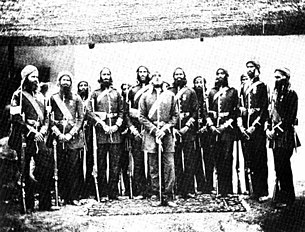
TheSikh Regimentis aninfantry regimentof theIndian Army.It is the most highly decorated regiment of the Indian Army and in 1979, the 1st battalion was theCommonwealth's most decorated battalion, with 245 pre-independence and 82 post-independence gallantry awards, when it was transformed into the 4th battalion,Mechanised Infantry Regiment.[4][5][6]The first battalion of the regiment was officially raised just before the partial annexation of theSikh Empireon 1 August 1846, by the BritishEast India Company.Currently, the Sikh Regimental Centre is located inRamgarh Cantonment,Jharkhand.The Centre was earlier located inMeerut,Uttar Pradesh.
The modern Sikh Regiment traces its roots directly from the11th Sikh Regimentof theBritish Indian Army.When transferred to the Indian Army like its sister regiments, the numeral prefix (in the case of the Sikh Regiment, 11) was removed and extra battalions were raised, transferred or disbanded to meet army needs. With a humble beginning of two battalions, today the fraternity has grown to a regiment of 19 regular infantry and two reserve battalions strong. The 6th battalion takes over as ceremonial battalion of President's palace of India.[7][8]
History
After theFirst Anglo-Sikh War(1845-1846),Sikhswho lived in the territory ruled by theSikh Empire(thePunjabregion) began to be recruited into theBengal Armyof theBritish East India Company.Among the earliest entirely Sikh units of the Bengal Army were the Regiment of Ferozepore (raised in 1846) which later became the14th King George's Own Ferozepore Sikhs,and the Regiment of Ludhiana (also raised in 1846) which later became the15th Ludhiana Sikhs.[9]After theSecond Anglo-Sikh War(1848-1849) morePunjabisbegan to be recruited into the Bengal Army, forming regiments such as the 1st Bengal Military Police Battalion, which later became the45th Rattray's Sikhs.Sikh units generally remained loyal to the British during theIndian Rebellion of 1857,in which many regiments of the Bengal Army (which mainly recruited fromBengal,BiharandAwadh) mutinied against their British officers. After the rebellion, troops from Bihar and Awadh were recruited less as they had led the mutiny; the centre of recruitment then shifted to the Punjab and theNorth-West Frontier,resulting in more Sikhs being recruited into the Bengal Army. A number of new Sikh regiments were raised, such as the36th Sikhsand35th Sikhs,both raised in 1887. 21 soldiers of the 36th Sikhs fought in theBattle of Saragarhiagainst 6,000-10,000Pashtuntribesmen in 1897 during campaigns in the North-West Frontier, in what is considered by some military historians as one of history's greatest last stands.[10]In 1922 the Indian government reformed theBritish Indian Armyby amalgamating single battalion regiments into multi-battalion regiments; this led to the formation of the11th Sikh Regimentfrom the 14th King George's Own Ferozepore Sikhs, the 15th Ludhiana Sikhs, the 45th Rattray's Sikhs, the 36th Sikhs, the47th Sikhs,and the 35th Sikhs. The 11th Sikh Regiment served duringWorld War IIand on thepartition of India,the regiment was allotted to the newly formedIndian Army,becoming the Sikh Regiment.
As part of the British Indian Army, Sikh regiments fought in numerous wars all over the world, such as theSecond Opium WarinChina,theSecond Anglo-Afghan War,many campaigns on the North-West Frontier, theWestern Front,GallipoliandMesopotamiacampaigns of theFirst World War,theThird Anglo-Afghan War,and theNorth African,ItalianandBurmacampaigns of theSecond World War,earning many gallantry awards and battle honours in the process.
During theIndo-Pakistani War of 1947-1948,the 1st battalion of the Sikh Regiment was the first unit to be airlifted toSrinagarto aid in the defence of theKashmir Valleyagainst Pakistani irregular forces.[11]Battalions of the Sikh Regiment also fought in theSino-Indian Warin 1962, the Indo-Pakistani wars of1965and1971,and theKargil Warin 1999.
Recruitment
Sikh regiment is a "single class" regiment.[12]Its soldiers are solely recruited fromJat Sikhsand its officers are non-Jat Sikhs.[13][14]They are trained at the Sikh Regimental Centre, currently located inRamgarh Cantonment,Jharkhand.The war cry of the regiment, taken from Sikh scriptures, isJo Bole So Nihal, Sat Sri Akal.[a]
Units
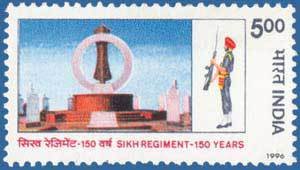
- 2nd Battalion
- 3rd Battalion
- 4th Battalion
- 5th Battalion
- 6th Battalion
- 7th Battalion
- 8th Battalion
- 10th Battalion
- 11th Battalion
- 13th Battalion
- 14th Battalion
- 16th Battalion
- 17th Battalion
- 18th Battalion
- 19th Battalion
- 20th Battalion
- 21st Battalion
- 22nd Battalion
- 23rd Battalion
- 24th Battalion
Territorial Army (TA)Units-
- 124 Infantry Battalion (TA) (Sikh) located atNew Delhi
- 152 Infantry Battalion (TA) (Sikh) located atLudhiana,Punjab
- 157 Infantry Battalion (TA) (Sikh) (Home and Hearth) BD Bari,Jammu and Kashmir
Others:
- 1st Battalion is now 4th Battalion,Mechanised Infantry Regiment
- 9th Battalion was disbanded in 1984
Battle honours and theatre honours
Battle honours
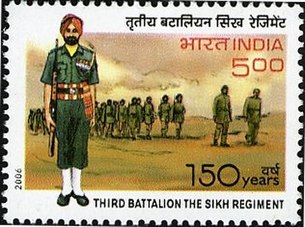
- Pre-Independence
- Lucknow1857-58, 1 Sikh
- Arrah1857, 3 Sikh
- Bihar1857, 3 Sikh
- China1860-62, 2 Sikh
- Ali Masjid1878, 1 & 3 Sikh
- Ahmed Khel1880, 2 Sikh
- Afghanistan1878-79, 1 Sikh
- Afghanistan 1878-80, 2 & 3 Sikh
- Kandahar1880, 2 Sikh
- Suakin1885, 2 Sikh
- Tofrek1885, 2 Sikh
- Manipur1891, 4 Sikh
- Chitral1895, 1 & 2 Sikh
- Samana1897, 4 Sikh
- Saragarhi/Gulistan1897, 36 Sikh
- Punjab Frontier1897, 2, 3, 4 & 35 Sikh (SRC)
- Malakand1897, 3 & 35 Sikh (SRC)
- Tirah1897-98, 2 & 4 Sikh
- China1900, 1 Sikh
- North-West Frontier1908, 3 Sikh
- World War I
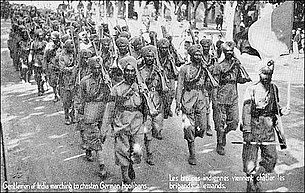
- La Bassée1914, 2 & 5 Sikh
- St-Julien1914, 2 & 5 Sikh
- Armentières1914-15, 5 Sikh
- Auber1914, 2 & 5 Sikh
- Givens 1914, 4 Sikh
- Tsingtao1914, 4 & 5 Sikh
- Neuve Chapelle1914-15, 2, 3 & 5 Sikh
- France and Flanders1914-15, 2 & 5 Sikh
- Suez Canal1914-15, 1 Sikh
- Festubert1915, 2 Sikh
- Tigris 1916,3 & 5 Sikh
- Pyres 1915, 2 & 4 Sikh
- Sari Bair1915, 1 Sikh
- Helles1915, 1 Sikh
- Krishna 1915, 1 Sikh
- Suva1915, 1 Sikh
- Gallipoli1915, 1 Sikh
- Egypt1915, 1 Sikh
- Mesopotamia1916-18, 1, 3 & 4 Sikh
- Sharon1918, 2 & 5 Sikh
- Palestine1918, 5 Sikh
- Baghdad1916-18, 5 Sikh
- Kut1917, 1, 3 & 5 Sikh
- Hai1917, 3 & 4 Sikh
- Megiddo1918, 5 Sikh
- Persia1918, 4 Sikh
- Egypt1918, 2 & 3 Sikh
- Inter-War years
- North-West Frontier1918-19, 5 Sikh
- Afghanistan1919, 2 Sikh
- Palestine 1921, 5 Sikh
- Second World War

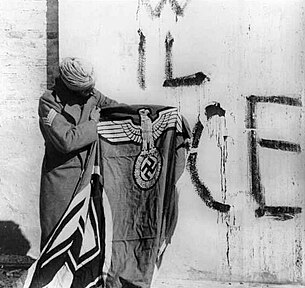
- Agordat1940-41, 4 Sikh
- Keren1941, 4 Sikh
- El Alamein1940-43, 4 Sikh
- Omars 1941, 4 Sikh
- Kuantan1941-42, 5 Sikh
- Niyor Kluang1941-42, 5 Sikh
- Mersa Matruh1941-42, 2 Sikh
- Kota Bharu1942, 5 Sikh
- North Arakan1942-45, 1 Sikh
- Buthidaung1942-45, 1 Sikh
- Coriano1943-45, 2 Sikh
- San Marino1943-45, 2 Sikh
- Poggio San Giovanni 1943-45, 2 Sikh
- Monte Calvo1943-45, 4 Sikh
- Kangla Tongbi1944, 1 Sikh
- Gothic Line1943-45, 4 Sikh
- Nyaung U Bridgehead 1945, 1 Sikh
- Irrawaddy River1945, 1 Sikh
- Shandatgyi 1945, 1 Sikh
- Kama 1945, 1 Sikh
- Sittang1945, 1 Sikh
- Post-Independence
- Srinagar1947, 1 Sikh
- Tithwal 1948, 1 Sikh
- Raja Picquet 1965, 2 Sikh
- Burki1965, 4 Sikh
- Op Hill 1965, 7 Sikh
- Siramani 1971, 4 Sikh
- Poonch1971, 6 Sikh
- Purbat Ali 1971, 10 Sikh
- Tiger Hill1999, 8 Sikh
Theatre honours
- Pre-Independence
- Post-Independence

- Jammu & Kashmir1947-48, 1, 5, 7 & 16 Sikh
- Jammu & Kashmir 1965, 2, 3 & 7 Sikh
- Punjab1965, 4 Sikh
- Sindh1971, 10 Sikh
- Punjab 1971, 2 Sikh
- East Pakistan1971, 4 Sikh
- Jammu & Kashmir 1971, 5 & 6 Sikh
- Kargil 1999, 8 Sikh
Operation Blue Star
About 5000 Sikh soldiers, some belonging to the regiment, mutinied after the storming of theGolden Templeby the Indian Army as part ofOperation Blue Starin 1984.[15]The Sikh Regiment's 9th battalion was disbanded after a large number of its troops mutinied.[16]
Gallantry awards

The museum of the Sikh Regimental Centre displays a record of the Sikh Regiment in four halls viz.,
- The Religious/Motivational Hall
- The Hall of Heritage
- The Regimental Glory Hall
- The Peripheral Gallery
In all, the regiment has to its credit 1652 gallantry awards and honours including:
- 2Param Vir Chakras
- 8Maha Vir Chakras
- 64Vir Chakras
- 4Ashoka Chakras
- 14Victoria Crosses
- 21Indian Order of Merits
In addition it has also earned:
- 75 battle honours
- 38 theatre honours besides five COAS Unit Citations
Indian Order of Merit
21 soldiers of the 36th Sikhs were posthumously awarded the Indian Order of Merit for their actions in theBattle of Saragarhiin 1897:[17][18]
- Hav.Ishar Singh
- Nk.Lal Singh
- L/Nk.Chanda Singh
- Sep.Sundar Singh
- Sep. Ram Singh
- Sep. Uttar Singh
- Sep. Sahib Singh
- Sep. Hira Singh
- Sep. Daya Singh
- Sep. Jivan Singh
- Sep. Bhola Singh
- Sep. Narayan Singh
- Sep. Gurmukh Singh
- Sep. Jivan Singh
- Sep. Gurmukh Singh
- Sep. Ram Singh
- Sep. Bhagwan Singh
- Sep. Bhagwan Singh
- Sep. Buta Singh
- Sep. Jivan Singh
- Sep. Nand Singh
Victoria Cross
- Nk.Gian Singh,11th Sikh Regiment(while serving in15th Punjab Regiment)
- Nk.Nand Singh,11th Sikh Regiment
Param Vir Chakra
- Lance NaikKaram Singh,1 Sikh Regiment
- SubedarJoginder Singh,1 Sikh Regiment
Ashok Chakra
Maha Vir Chakra
- Major Ajit Singh
- Sub. Ajit Singh
- Sep. Amar Singh
- Brigadier Joginder Singh Bakshi
- Major Amarjit Singh Bal
- Lieutenant Colonel Inderbal Singh Bawa
- Sub.Nand Singh
- Lieutenant ColonelDewan Ranjit Rai
- Shanghara Singh
Vir Chakra
- Lieutenant GeneralHarbaksh Singh
- Subedar Nirmal Singh (Posthumously)
- Subedar Karnail Singh (Posthumously)
- Sepoy Satpal Singh
- 2nd Lieutenant R S Nagar (16 Sikh Regiment)
- L/Nk Mohinder Singh (16 Sikh Regt)
Padma Vibhushan
- Lieutenant General Harbaksh Singh
Padma Bhushan
- Lieutenant General Harbaksh Singh
Padma Shri
- SubedarKaur Singh(10 Sikh) Bo xing
See also
Alliances
References
Notes
- ^English:One will be blessed eternally who says that God is the ultimate truth
Citations
- ^"Padma Awards"(PDF).Ministry of Home Affairs, Government of India. 2015.Retrieved21 July2015.
- ^abAggarwal, Rashmi (January 0101)."Ashoka Chakra Recipients".
- ^http:// dailypioneer /state-editions/dehradun/lt-gen-sanjay-kumar-jha-is-head-of-ima.html[bare URL]
- ^http://mod.nic.in/samachar/18/html/ch8.htm[dead link]
- ^"Archived copy"(PDF).Sikh review.Archived fromthe original(PDF)on 18 July 2011.Retrieved2 November2010.
{{cite web}}:CS1 maint: archived copy as title (link) - ^John Pike."Army Equipment".Globalsecurity.org.Retrieved1 September2022.
- ^"Sikh Regiment takes over ceremonial duties at Rashtrapati Bhavan".
- ^"Sikh Regiment takes over ceremonial duties at Rashtrapati Bhavan".The Hans India. 28 November 2020.Retrieved11 July2021.
- ^"No. 22176".The London Gazette.24 August 1858. p. 3903.
- ^Pandey, Geeta (5 December 2011)."India polo match honours Sikhs' 1897 Saragarhi battle".British Broadcasting Corporation.bbc.co.uk.Retrieved19 July2012.
- ^"Defence of Srinagar 1947".Indian Defence Review.Archived fromthe originalon 18 March 2016.Retrieved3 April2016.
- ^Wilkinson, Steven I. (2015).Army and Nation: The Military and Indian Democracy Since Independence.Harvard University Press.p. 41.ISBN978-0-674-72880-6.
Some regiments, such as the Sikh Regiment and Sikh Light Infantry, are "single class," and therefore recruit combat troops only from members of a specified class, such as Jat Sikhs and Mazhabi and Ramdasia Sikhs.
- ^Kundu, Apurba (1994). "The Indian Armed Forces' Sikh and Non-Sikh Officers' Opinions of Operation Blue Star".Pacific Affairs.67(1): 48.doi:10.2307/2760119.JSTOR2760119.
Moreover, with the exception of Gurkhas (recruited in Nepal), Sikhs remain the only community to have infantry regiments drawn exclusively from their own numbers: the Sikh Regiment (manned, though not officered, by high-caste Jat Sikhs) and the Sikh Light Infantry (manned entirely by Mazhabi, or Scheduled Caste, "untouchable" Sikhs.
- ^Barua, Pradeep P. (1998)."Ethnic Conflict in the Military of Developing Nations: A Comparative Analysis of India and Nigeria".In Karsten, Peter (ed.).Recruiting, Drafting, and Enlisting: Two Sides of the Raising of Military Forces.Taylor & Francis.p. 184.ISBN978-0-81-532975-6.
For example, all the Sikh units in the Indian Army do not come from the same mother regiment. There are two regiments, the Sikh Infantry Regiment (composed of high caste Jat Sikhs) and the Sikh Light Infantry Regiment (composed of lower caste Mazbhi Sikhs).
- ^"General Promises to Punish Sikh Mutineers".The New York Times.2 July 1984.
- ^"J&K: Lessons from 1984 unheeded".22 August 2019.Retrieved1 April2021.
- ^"No. 26937".The London Gazette.11 February 1898. p. 863.
- ^Regimental numbers fromphoto of Saragarhi memorial plaque
- ^"Subedar Surinder Singh selected for posthumous Ashok Chakra".Rediff.Retrieved6 October2014.
- ^"Brave soldier Bachittar Singh".
- ^"Havildar Bachittar Singh Ashoka Chakra Recipient".13 September 1948.
- ^"JOGINDER SINGH| GALLANTRY AWARD".
Bibliography
- 1st King George V's own battalion,: The Sikh Regiment
- A Legacy of Valour - An Illustrated History of the Sikh Regiment (1846-2010). Ramgarh: The Sikh Regiment Officers' Association, 2011,ISBN978-81-905619-7-6.
External links
 Media related toSikh Regimentat Wikimedia Commons
Media related toSikh Regimentat Wikimedia Commons- globalsecurity.org: The Sikh Regiment
- Bharat-Rakshak: The Sikh Regiment

